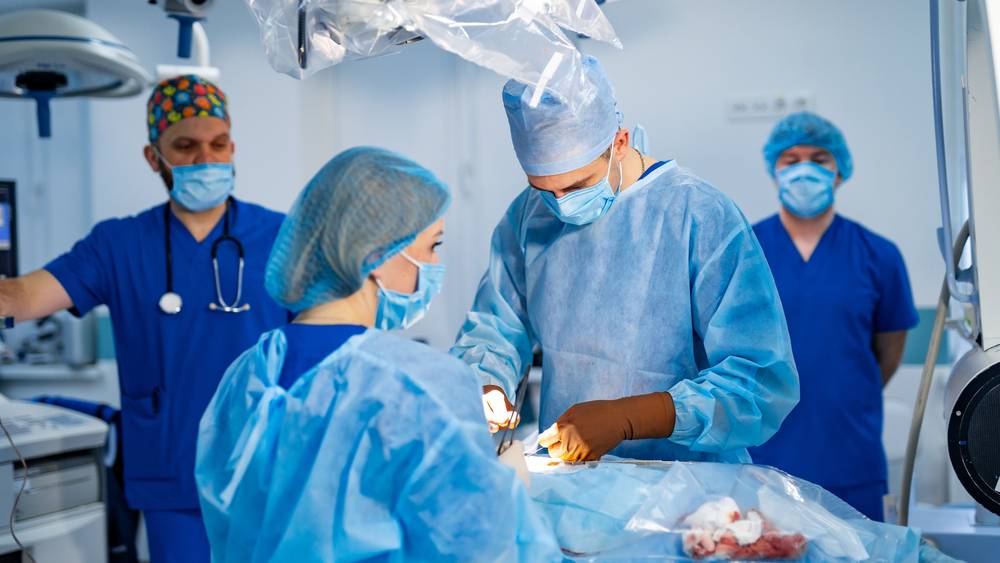#sivacaresforyou

As the medical field continues to evolve, one of the most significant advancements has been the development of minimal access surgery (MAS), also known as minimally invasive surgery. This innovative approach to surgery offers numerous benefits over traditional open procedures, transforming patient outcomes and healthcare practices. In this blog, we will explore the benefits of minimal access surgery and how it is shaping the future of healthcare.
Minimal access surgery involves performing surgical procedures through small incisions, using specialized instruments and advanced imaging techniques. Unlike traditional open surgery, which requires large incisions to access the surgical site, MAS utilizes small cuts, often less than an inch long. These smaller incisions allow surgeons to insert a camera (laparoscope) and specialized surgical tools to perform the operation with precision and minimal disruption to surrounding tissues.
One of the most immediate benefits of MAS is the significant reduction in postoperative pain and discomfort. Smaller incisions result in less trauma to the body, which translates to fewer pain signals being sent to the brain. As a result, patients often require less pain medication and experience a more comfortable recovery process.
The minimally invasive nature of MAS allows for quicker recovery times compared to traditional open surgery. Smaller incisions mean less tissue damage, which accelerates the healing process. Many patients can return to their normal activities much sooner, sometimes within a few days, depending on the complexity of the procedure. This quicker recovery is particularly beneficial for working individuals, as it reduces the time away from work and other daily responsibilities.
Minimal access surgery typically results in shorter hospital stays. In many cases, patients can go home the same day or within a day or two after the procedure. This not only enhances patient comfort and convenience but also reduces healthcare costs by minimizing the length of hospital stays and the resources required for inpatient care.
Smaller incisions reduce the exposure of internal organs to external contaminants, significantly lowering the risk of postoperative infections. Infections can complicate recovery, extend hospital stays, and increase medical costs. By minimizing this risk, MAS contributes to better overall patient outcomes and decreases the likelihood of complications that require additional medical intervention.
One of the most visible benefits of minimal access surgery is the minimal scarring it leaves behind. Traditional open surgeries often result in large, noticeable scars. In contrast, the small incisions used in MAS heal more discreetly, resulting in less visible scars. This cosmetic benefit can have a positive impact on a patient’s self-esteem and body image.
MAS leverages advanced imaging technologies, such as high-definition cameras and robotic-assisted systems, to provide surgeons with enhanced precision and control. These tools allow for better visualization of the surgical site, enabling more accurate and delicate maneuvers. As a result, surgeons can perform complex procedures with greater accuracy, improving surgical outcomes and reducing the risk of complications.
Minimal access surgery is applicable to a wide range of medical conditions and surgical procedures. It is commonly used in general surgery, gynecology, urology, orthopedics, and cardiovascular surgery, among other fields. Procedures such as gallbladder removal, hernia repair, hysterectomy, and joint replacements can all be performed using minimally invasive techniques. This versatility makes MAS a valuable option for many patients and medical conditions.
The cumulative benefits of minimal access surgery—reduced pain, faster recovery, shorter hospital stays, minimal scarring, and lower risk of complications—contribute to higher patient satisfaction. Patients who undergo MAS often report a more positive surgical experience and are more likely to recommend the procedure to others. Improved patient satisfaction is a key indicator of the success of any medical intervention and can enhance the reputation of healthcare providers and institutions.
The success and advancement of minimal access surgery are closely tied to technological innovations. Key technologies driving the field forward include:
As technology continues to advance, the scope and capabilities of minimal access surgery are expected to expand. Future developments may include:
Minimal access surgery represents a significant leap forward in surgical practice, offering numerous benefits that enhance patient outcomes and overall healthcare quality. Reduced pain, faster recovery, shorter hospital stays, minimal scarring, and lower risk of infections are just some of the advantages that make MAS an appealing option for both patients and healthcare providers. As technology continues to evolve, minimal access surgery will undoubtedly play an increasingly important role in shaping the future of healthcare, providing safer, more effective, and patient-friendly surgical options. By embracing these advancements, healthcare providers can offer cutting-edge care that meets the growing expectations of patients in the modern era.
Copyright ©2023 Siva Hospital - All rights reserved | Designed & Developed by Ayatiworks